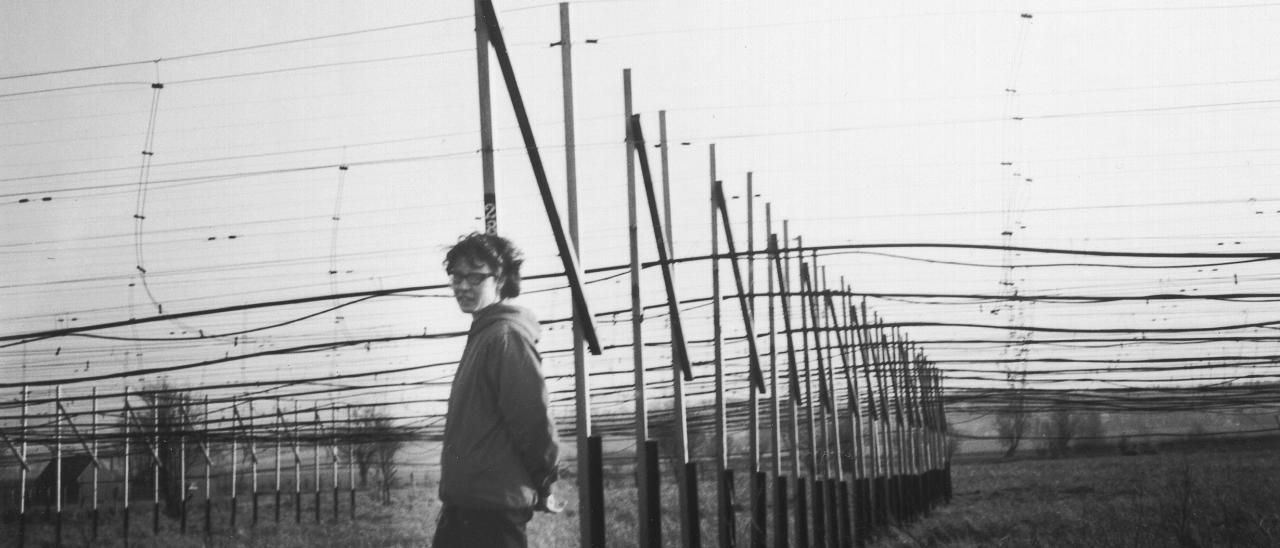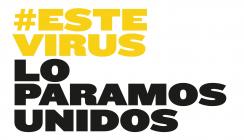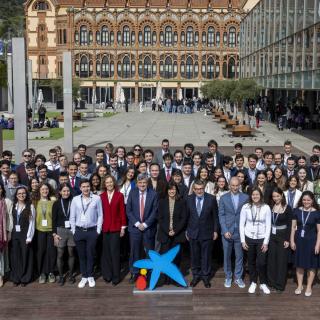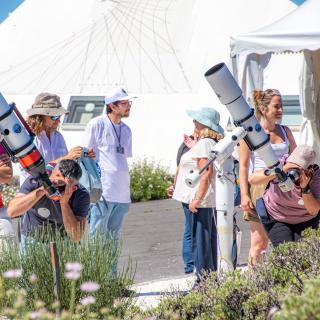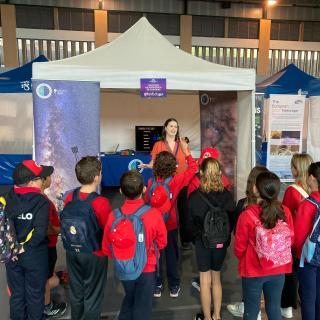When Jocelyn Bell Burnell failed an important exam at the age of 10 she did not expect to become one of the most relevant figures in astronomy. Nor when she began work on her doctoral thesis did she expect to discover an unknown type of star. The story of Jocelyn Bell is one of serendipity, perseverance, the “impostor syndrome” and “little green men”. In honour of her career she will have her own star in the Passage of Science in La Palma. So she will receive the homage which the Island pays to notable scientific figures, such as Stephen Hawking, Alekséi Leonov, Takaaki Kajita, and Samuel Ting.
Jocelyn Bell Burnell is a Northern Irish astronomer who, along with Anthony Hewish was the discoverer of pulsars: neutron stars which spin rapidly and send out strong beams of radiation. Her perseverance, and the support of her parents enabled her to over come obstacles, and to follow a career where the presence of women was limited, until she became one of the first full professors of Physics in Great Britain.
This UK astronomer was born in Belfast in 1943. From an early age her interest in astronomy was notable. When she was 14 years old her father brought home a book on astronomy (Frontiers of Astronomy by Fred Hoyle). “I took it to my room and I read it all”. Her father was an architect and was in charge of the design of the Armagh Planetarium and Observatory, which was not far from her home, to which she made frequent visits. The personnel of the Planetarium encouraged her to explore her curiosity for astronomy.
Bell Burnell explains that her future as an astronomer was almost precluded by a failure at an early age. She failed an important exam when she was 10 years old (the so-called “11 plus”) which was taken by the students in the last year of primary school. This test determined whether or not the student could enter a school offering an academic syllabus, and according to the result, Jocelyn should not have continued with an academic career. In spite of this her parents supported her and encouraged her to proceed with a more “academic” education.
"Domestic science"
First she studied in a school in Northern Ireland, where she experienced at first hand the inequality in the education at the time: while the boys were sent to the science laboratories, the girls had to go to the classroom of “domestic science” where they were taught to cook and sew. Jocelyn’s parents, and others, protested against this discrimination, and managed to get their daughters transferred to the science classes. Bell Burnell obtained the highest mark in the final exam of Physics and Astronomy in that course.
Then she entered The Mount School, a Quaker independent school (the Quakers, a religious community founded in England) for girls in York, and then went to Glasgow University in Scotland, where she graduated with honours in 1965. In that year she started to work on her doctorate, supervised by Anthony Hewish, at the University of Cambridge, where she arrived “more or less by accident”. Bell Burnell, frightened by the “impostor syndrome” thought that she did not deserve the place at that university. She thought that sooner or later they would identify her as a fraud, so she decided to work hard until they expelled her: “When they came to throw me out I would not feel so much to blame. I would know that I had done my best”.
The work for her thesis was going, in principle, to be dedicated to quasars, astronomical sources of electromagnetic radiation then recently discovered. To study those objects, Jocelyn chose radioastronomy (still a relatively young field) rather than optical astronomy. So for the first two years after graduating she worked on the construction of a special radiotelescope designed by Hewish.
The radiotelescope began operating in July 1967. It had 2,000 receivers distributed in an area of two hectares. These were constantly receiving and recording signals. More than 120 metres of paper were produced by the telescope every four days, and Jocelyn’s work was to decipher the signals in this huge quantity of data.
Signals from outer space
In August of the same year the telescope recorded some strange signals coming from a source which emitted very short bursts of radiation at precise intervals. Just because of her guilt feelings for the “impostor syndrome” Jocelyn detected these very small signals, because “I was being very cautious and minutious” in analyzing them. The signals did not fit the usual pattern of a quasar, so that she thought that they were something unprecedented, and went to Hewish with this information. He reacted with scepticism, and associated this with some kind of interference close to the telescope. In those days radiotelescopes used to have those problems, and the results they recorded ran the risk of being corrupted by signals from cars or from radios. But even so she did not think that it was interference, and after checking the equipment no problems of this type were found.
In November the telesope piced up some intense signals with an extraordinary regularity. Bell and Hewish even considered the possibility that these signals were messages sent by an extraterrestrial civilization. Because of this the source of the signals was at first called “Little Green Men”.
After an exhaustive search of the recorded signals, Jocelyn found another three sources which were emitting similar signals. As time went on other members of the research team found more sources of the same type. Hewish chose another name for these sources: “pulsating stars”, which was later contracted to form the name by which they are known today, “pulsars”. Their discovery was announced on February 9th 1968, and although the idea that they were extraterrestrial messages had already been rejected, some English tabloids gave the news as if they really were.
The detection of pulsars is considered one of the most important astronomical discoveries of the XX century, which was an important check on theories of stellar evolution. It was the cause of the award of the Nobel Prize in Physics in 1974 -the first time the prize had been awarded in the field of astronomy-, but it was given only to Anthony Hewish and Martin Ryle (the latter for his invention of the technique of interferometric imaging in radioastronomy). Jocelyn Bell Burnell did not receive the prize. In the press release she was not even mentioned, which was criticized by many prominent figures in astronomyu, notably by Sir Fred Hoyle (this criticism precluded him from a share of the prize later awarded to his friend and collaborator Willy Fowler for their work on nucleosynthesis in stars). However Jocelyn said that this was not so important “I think that it would reduce the importance of the Noble Prizes if they were given to research students, except in very exceptional cases, and I don’t think this is one of them).
After this discovery, Jocelyn continued her career in astronomical research. It has been prolific, with achievements which confirm over and over again the important role she has played in science. She worked on gamma rays in the University of Southampton, and in X-rays at the Mullard Space Science Laboratory where she worked between 1974 and 1982. Then in 1986 she became the manager of the James Clerk Maxwell telescope project in Hawaii. She has also had an important career in teaching. From 1991 to 2001 she was Professor of Physcis at the Open University and later Visiting Professor at the University of Princeton. She is currently visiting Professor of Astrophysics at the University of Oxford. Between 2002 and 2004 she was president of the Royal Astronomical Society, only the second woman to hold that office. In 2014 she was named president of The Royal Society of Edimburgh.
Commitment to equality and diversity
One of Jocelyn Bell’s interests has been the number of women in the fields of physics and astronomy. According to the data of 2018, only 35% of the students in sciences and technology (STEM) in Britain are women. The percentage of women graduating in these subjects in that year was 26%. She remembers being, during most of her career, the women with the highest responsibility in the places where she was working. Although there has been a small increase in the percentage of women compared to the time when she began her professional career, the gender gap in these disciplines is still significant. For that reason she has been very active in the struggle against inequality. She helped to produce the Athena SWAN statute: a programme set up by the Unit for Equality of the United Kingdom in 2005 which recognizes and give awards to good practice aimed at gender equality in research institutions.
In addition, in 2018 Jocelyn was awarded the special Breakthrough Prize in fundamental physics. This prize, one of the “Oscars of Science”, recognize her work in discovering pulsars, coinciding with the 50th anniversary of the discovery. This prize, of 3 million dollars, is the best endowed prize in the field of science at the present time. After the announcement, Jocelyn expressed her intention of donating the full amount to give an economic impulse to women, ethnic minorities and refugees, and with it to help them to become researchers in the field of Physics. In this way she established the Bell Burnell Fund of fellowships for graduates, which is one proof of her intrest in equality and diversity.
Interview with Jocelyn Bell in "Voces": https://youtu.be/ZKuwlkIc6oI
Link to the article in “Paralajes” [pages 70 – 73]: https://www.iac.es/system/files/documents/2019-02/Paralajes_Mujeres_en_Astro_1.pdf
